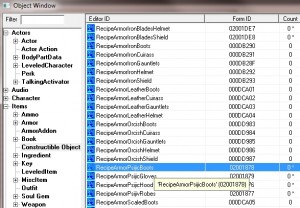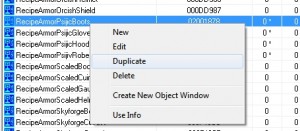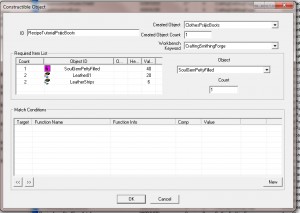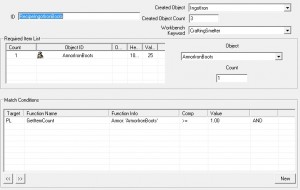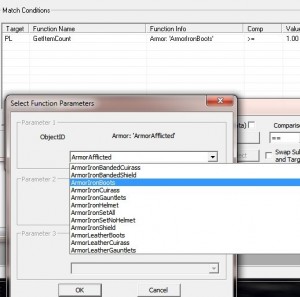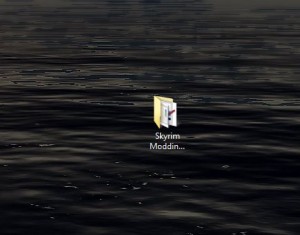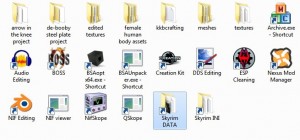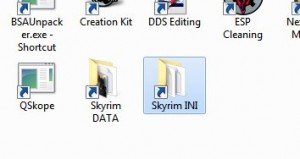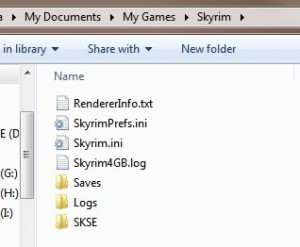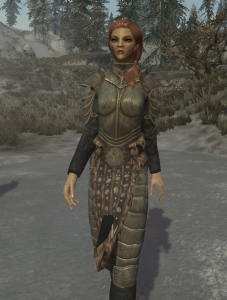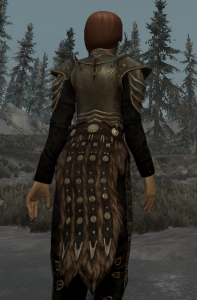So you might have noticed the guy in the banner that pops up sometimes. The one that wears the tartan hood. He’s a follower I’ve been working on and I’ll say, it’s a pain in the butt to get the gray face bug fixed on a custom NPC.I created his face in the chargen and exported it the normal way using spf charactername in the console. Then I imported it through the NPC editor in the CK.(For the record, I have RaceMenu and Enhanced Character Edit installed, and I think his face port went juts fine using the SPF export straight from the game. He doesn’t look particularly different from how he did as a PC, but the real test will come if I disable the chargen mods.)
Everything looked pretty good, but I had a problem when it came to viewing him in the game proper, and that was the gray face. Googling around, I came across several scattered forum posts and the wiki, so I read up on it.
It’s because the CK doesn’t generate the head mesh for the NPC automatically. You have to do it yourself by selecting the NPC in the Item window, not the NPC edit window.
Selecting the NPC and hitting CRTL-F4 will generate the meshes and textures that will properly display the NPC in game without the pale look and neck seam.
But wait! Some of the tutorials don’t really specify the conditions where CK will actually export the darn things. I found this out from a forum post I’ve since lost, but anyway. For some reason, the CK won’t generate the files when you have the NPC selected through the ALL category in the CK, especially if you’re like me and tend to use the filter a lot in order to cut down on wild edits and just being about to find the right entry. The best bet is to go to where the NPC is listed normally, say if your character was a Nord, it would be in NordRace.
So select them, and CTRL-F4. CK will inform you it will start generating the files. Give it a bit. It will have a popup that says “done” when it is done, and it might take a bit depending on if you have multiple NPCs selected. Make sure that any previously generated files for your NPC are deleted if you are updating the face files! I’ve had the CK actually act like it’s exporting, but it really didn’t because the files were already there. You can tell when it does this: there will be a slight pause when it is actually generating, but when it isn’t the DONE popup will appear almost immediately.
A word of warning:
I have tried this successfully several times for my NPC, right up until I started giving him his custom hair.
Custom hair on an NPC requires a bit more involved work, and for this NPC I used Vie Male Hair Pack, which comes in a BSA and ESP respectively and is a pretty awesome addition for guys. They look a bit punkish but some ‘dos can also be used for Celtic NPCs like my guy up there. (Also, if you download it, remember to check for the password because Vie uses a secured archive.)
Following the ESM conversion method to get the hair listed in the CK so I could give it to my NPC, I also had to unpack the BSA file before the CK would generate the proper head mesh and textures, otherwise it gave me errors whenever I tried to view the hair in the NPC preview and it also gave me errors while generating the NPC meshes. In fact, prior to unpacking it wouldn’t even display the hairs in preview mode. There was the BSA archive right there! I have no problems with Apachii’s hairs but Apachii also provides an ESM out of the box… but I have no idea what’s going on there and will have to research further.
Anyway. Unpacking the BSA did the trick and made working meshes.
I believe when it couldn’t find the hair meshes in the loose files, it generated an NPC face mesh without the hair. He still had the gray face bug in this instance because in game he had the hair, but according to the CK he didn’t and that caused the generated face files to not match up.
It seems like any time the face files and the NPC do not match up, the gray face bug occurs as well.
After the CK finally found the loose hair meshes, and generated the face files properly with custom hair, he didn’t have the gray face bug.
Lastly, if you ever make an mod with an NPC, do not forget to generate the face files and include them with the proper file pathing in your zip file.
The files you can find in Data\meshes\actors\character\FaceGenData\FaceGeom\YOUR PLUGIN.esp\
and Data\textures\actors\character\facegendata\facetint\YOUR PLUGIN.esp\
Any time you make an edit to your NPC’s looks, you should generate a new face file.
You’d think this is something the CK would do on its own once you were done editing the guy, right?
I still have some testing to do to see if I can get things working fine with the BSA and ESP.

